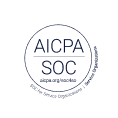
4 tips for customer-centric digital product development

Collecting customer feedback is an integral part of the digital product development process. Product teams shouldn't wait until the eve of launch to conduct user research in product development, but rather, it should be a continuous, iterative process where you test at every stage of the product life cycle—and ideally, early and often.
Not only does this enable you to gain a better understanding of your customers, which is imperative for developing a satisfying customer experience, but it also helps your team to navigate the landscape successfully.
As your digital product development team looks to the year ahead, you’ll be navigating a competitive market and an uncertain economy. Keep these four takeaways in mind to continue creating valuable experiences and products for your customers.
1. Let customer needs guide development

The product development process inevitably includes uncertainty—as well as opportunities. How can we decide what to make? When there are unclear priorities, navigate them by letting them create room for exploration and collect customer feedback. Those insights will help guide and tell a story of what you’ll make based on that list.
Customers of UserTesting have managed this by conducting feature prioritization test to gauge what features users find most valuable to help inform the team's product roadmap. This pulls the customer into the product development process and can help settle internal debates and validate how features and enhancements should be prioritized.
In its most optimistic sense, teams develop priorities with vast customer insight, contributing to what teams create. Additionally, priorities should be considered as commitments that will stick around for a while, sometimes even longer than roadmaps. And similar to how testing should be conducted, prioritize early and often.
Try our needs and frustrations test template
2. Embrace ambiguity to leverage user feedback
To some degree, we’re all uncomfortable with a little ambiguity. You can, however, use ambiguity to your advantage to gain insight into your design process, if you reframe it in a positive light.
You may recognize that although it isn't a fulfilling place to be in, it’s the point where you should ask users questions. Begin with a state of curiosity and ask yourself if customers would want this product before you decide if your idea is viable or feasible.
The best way to surpass ambiguity and develop solutions is to place your customers’ needs at the forefront. AJ Joplin, Senior Analyst at Forrester, said,
“We’ve all worked at places where someone has an idea, we go build that idea, we make concepts, and we only ask favorable questions about that concept from our users if we do. We ship it, and then disaster strikes, and we’re wondering why. Root cause: you did not create space for teams to diverge and converge, and collect data and talk about what it means.”
3. Avoid the parity trap
Joplin recommends, "Stay out of the parity trap." Think of a parity trap as the business version of keeping up with the Joneses. Organizations feel they're lacking compared to their competitors, so they create products similar to those of their competitors.
And while a competitor may have released a new product or feature with fancy bells and whistles, you won’t know if customers actually wanted—or needed—those features if you didn’t ask them yourself.
UserTesting customers make a habit of benchmarking their experiences against their competitors on an ongoing basis. As a result, they’re seeing the bigger picture over time, rather than getting distracted by seemingly exciting features or enhancements that customers may not want or need.
Fortunately, connecting directly with your target audience—before you develop anything—takes the guesswork out of sizing up your competition. And remember, what works for your competitors, might not work for your unique audience. Competitive intelligence gives you insight into your competitors, but it’s crucial to also get feedback from your own audiences as well.
Combat the parity trap by thinking experientially. Identify any potential gaps your competitors aren't filling and leverage that emptiness to design something meaningful for your customers—that isn’t being offered anywhere else.
4. Shorten product roadmaps and keep them simple
Many product teams have been known for creating a product roadmap that projects too far into the future or outpaces business priorities. Teams may be ambitious and excited about their new product and how it'll impact the market and their users, causing them to create goals that may change overnight on their product roadmaps.
To prevent this from happening, consider a theme-based roadmap, which addresses product enhancements at a high level. The advantage is that this leaves room for changes and flexibility—while still following an overall vision and path.
Although you should remain ambitious and goal-oriented, shorter product roadmaps are more realistic for teams. Technology is moving rapidly, and customer needs and preferences can change in the blink of an eye.
As a best practice, and to maintain customer-centricity, gather user feedback at each stage of the development process to ensure your roadmap is headed in the right direction. If you're too focused on the future impact and not enough on the short term, you may miss out on key findings that'll benefit your product.
Watch below to hear how ATB innovates quickly, with customers in mind.

Insights with impact
To recap, collect user feedback early and often, evaluate competitors on an ongoing basis to avoid the parity trap, allow priorities to guide long-term development, and lean towards theme-based roadmaps. Informed with these reminders, you'll create an impactful product for your users that’ll leave them coming back for more.

Unlock your customer insight ROI
Discover the hidden ROI of your customers' insights. Book a meeting with our Sales team today to learn more.






